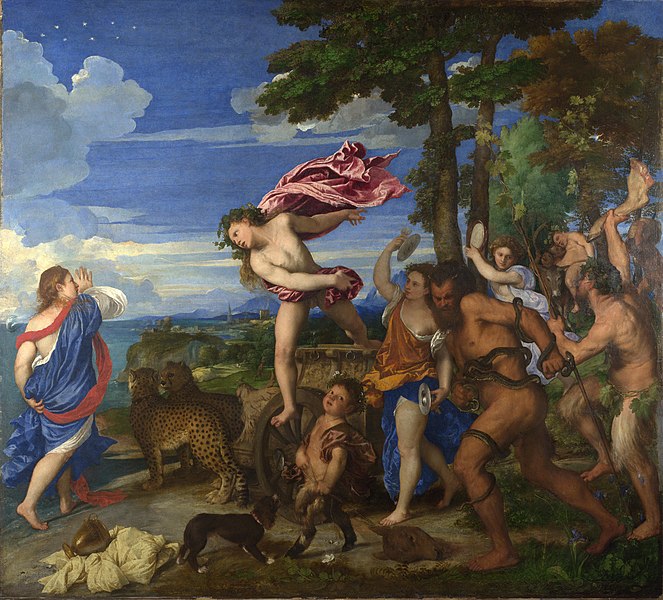I often wish I could give my younger self "tips"...
Pay more attention in Spanish class. Yes, one day you'll actual travel (and live) outside the US.
Spend less time analyzing your non-existant dating life. One day you'll find someone without trying (wah?!)
Don't spend all your free time on basketball. You're not headed to the WNBA (nor would you want to be).
Stop wearing those super-short skirts. It's embarrassing. I'm already judging you.
The list could go on and on....
Well, like many other things, I wish I had taken more classes on Art History. As an adult, I love going to museums, but I don't have the context to really understand the paintings.
Last week, I went to a new series "Picture This" by Artwise, led by Claire Kwiatkowski, who has a MA in Art History and previously worked at the British Museum. She's also a dazzling storyteller.
We learned about Titian and his painting, Bacchus and Ariadne, which is way more interesting (and a bit scandalous) in context.
This year, Claire is giving a series of 12 talks over dinner for $30 each in Singapore. I highly recommend going -- you can check out the calendar here and read the description below.
"PICTURE THIS is a series of twelve talks on iconic paintings and sculptures from western art history. Chronological in approach, the talks can be enjoyed individually or taken as a whole to provide an understanding and appreciation of the development of art in the west. Starting with the perfection of the Italian Renaissance, you will journey through the spell-binding world of the Venetian High Renaissance, the dramatic works of the Baroque, the luminous world of Dutch Golden Age painting, the titillating pictures of the Rococo, the highly controlled and political work of Neo-Classicism to the emotive paintings of Romanticism. From there, the birth of Modern art is ushered in through the rebellious works of the Realists, the revolutionary approach of the Impressionists and the groundbreaking paintings of the Post-Impressionists.
The artists to be explored are Michelangelo, Titian, Caravaggio, Rembrandt, Fragonard, David, Goya, Courbet, Manet, Monet, Van Gogh"







